History of the Los Angeles Police Department
The Los Angeles Police Department was formed in 1869, and has since become the third-largest law enforcement agency in the United States. They have been involved in various events in history, such as the Black Dahlia murder case, and the infamous Rampart scandal.
Early history
California Gold Rush Los Angeles was known for its violence, gambling and "vice" and lack of effective civil law enforcement. It was reputed to have the highest murder rate in the United States at the time and the countryside was infested with bandits. Most men went armed with pistols and knives and lynching was often the method used to dispose of lawbreakers, courts being few and ineffective. The first specific Los Angeles police force was founded in 1853 as the Los Angeles Rangers, a volunteer California State Militia company that assisted the existing County Sheriff in enforcing the law until disbanded in 1857.[1] The Rangers were supplemented from 1853 by the Los Angeles Guards, a local volunteer California State Militia company that lasted until 1880 [2] and by the Los Angeles City Guards (1855–1861).[3] The first paid police force was created in 1869, when six officers were hired to serve under City Marshal William C. Warren. Warren was shot by one of his deputies, Joe Dye, in 1870 in a quarrel over a reward. To replace Warren, the newly created Board of Police Commissioners selected Jacob F. Gerkens. The latter was replaced within a year by saloon owner Emil Harris, the second of fifteen police chiefs from 1876 to 1889.
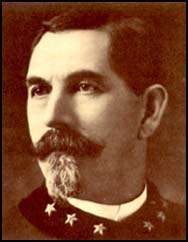
The first chief to remain in office for any time was John M. Glass; appointed in 1889, he served for eleven years and was a driving force for increased professionalism in the force. By 1900 there were 70 officers, one for every 1,500 people; in 1903, with the start of the Civil Service, this force was increased to 200, although training was not introduced until 1916. The rapid turnover of chiefs was renewed in the 1900s as the office became increasingly politicized; from 1900 to 1923 there were sixteen different chiefs. The longest-lasting was Charles E. Sebastian, who served from 1911 to 1915 before going on to become mayor.
In 1910 the department promoted the first sworn female police officer with full powers in the United States, Alice Stebbins Wells. Georgia Ann Robinson became the first African-American female police officer in the country in 1916.[4]
World Wars

During World War I the force became involved with federal offenses, and much of the force was organized into a special Home Guard. In the postwar period, the department became highly corrupt along with much of the city government; this state lasted until the late 1930s. Two police chiefs did work within a mandate for anti-corruption and reform. August Vollmer laid the ground for future improvements but served for only a single year. James E. Davis served from April 1, 1926 to December 29, 1929 and from August 10, 1933 to November 18, 1938.[5] In his first term he fired almost a fifth of the force for bad conduct, and instituted extended firearms training and also the dragnet system of policing. In his second term Davis instituted a "Red Squad" to attack Communists and their offices.
With the replacement of Mayor Frank L. Shaw in 1938, the city gained a reformist mayor in Fletcher Bowron. He forced dozens of city commissioners out, as well as more than 45 LAPD officers. Bowron also appointed the first African American and the first woman to the Police Commission. The modernizer Arthur C. Hohmann was made chief in 1939 and resigned in 1941 after a strike at the North American Aviation plant in Inglewood, in which he refused to use the LAPD as strikebreakers.
During World War II, under Police Chief Clemence B. Horrall, the force was heavily depleted by the demands of the armed forces; new recruits were given only six weeks training (twelve was normal). Despite the attempts to maintain numbers the police could do little to control the 1943 Zoot Suit Riots. War Emergency personnel were given a "WE" designation with their badge numbers to distinguish them from other officers.
Among the department's more notorious cases of the Horrall years was the January 15, 1947 murder of Elizabeth Short, known as the Black Dahlia.
Horrall and Assistant Chief Joe Reed resigned in 1949 under threat of a grand jury investigation related to the Brenda Allen scandal. Several of Horrall and Reed's more enduring actions, among others, were to approve a radio show about the LAPD titled Dragnet in the same year, with Jack Webb starring in the program, and the 1946 founding of the LAPD's secret "Gangster Squad" aimed to stop the rising threat of the American Mafia and organized crime (led by the local Los Angeles crime family) in the city.
Professionalism
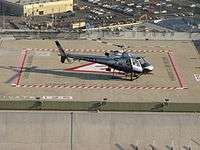
Horrall was replaced by a retired Marine general, William A. Worton, who acted as interim chief until 1950, when William H. Parker was chosen in tight competition with Thad Brown. Parker advocated police professionalism and autonomy from civilian administration, especially as concerned internal affairs. The Bloody Christmas scandal in 1951 led to calls for civilian accountability and an end to police brutality in the city itself.
Parker served until his death in 1966 from a heart attack, the longest period in office of any chief. The motto "To Protect and to Serve" was introduced in 1955. During this period the LAPD set the standards of professionalism echoed in the contemporaneous TV series Dragnet and Adam-12. The most serious challenge in this period was the 1965 Watts riots following accusations of mistreatment and police brutality toward minority communities by the City and the LAPD. For six days, buildings and businesses were looted and set on fire, and sniping also took place before the California Army National Guard were deployed to assist the overwhelmed LAPD in restoring order. Over 34 people died in the Watts riot and $40 million in damage was caused as almost 1,000 buildings were damaged or destroyed. Most of the physical damage was confined to white-owned businesses that were said to have caused resentment in the neighborhood due to perceived unfairness.
Edward M. Davis as chief

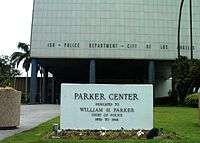

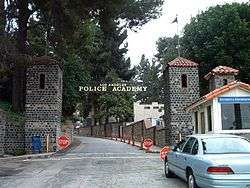
Parker was succeeded by Thad Brown as acting chief in 1966, followed by Thomas Reddin in 1967. Following an interim term by Chief Roger E. Murdock, the outspoken Edward M. Davis became chief in 1969; Chief Davis introduced a number of modern programs aimed at community policing, special street gang control units, as well as the SWAT unit (1972); he retired in 1978.
The street gang control units were structured by Deputy Chief Louis Sporrer, who commanded Operations South Bureau, which was the Headquarters for the South Central Los Angeles police divisions. In 1972 street gangs were becoming a growing problem and initially were made-up of the best known gang structures of the Crips and the Bloods. A Gang Intelligence unit was set up in 77th Street Division headed by a Sergeant Robert Michael. A uniformed team was set up and given the acronym of TRASH, or Total Resources Against Street Hoodlums, headed by Sergeant Beno Hernandez. It was from this time on that the flattering term gang was dropped and the term "hoodlums" was adopted.
Intelligence indicated that each gang had a "leader", a few close "associates" and follower "acquaintances" and when the leader was removed by arrest and detention that crime in the group's area of control went down significantly; when the leader returned however, crime returned to its previous level. To address this phenomenon, and to give courts a better understanding of whom they were dealing with, a joint task force of police, probation, parole, schools, and others formed an entity with an acronym of DDCP, or Disposition Data Coordination Project. This entity was housed in the South Bureau, and coordinated by the Intelligence Sergeant Michael. DDCP was a pre-sentence gathering of reputation information in the community, allowed under California law to be considered by the Court.
The DDCP was a repository of sources for the court to consider in its sentencing disposition. Soon however, it was dubbed the Alpha File by several attorneys and the ACLU filed suit against the City of Los Angeles. The DDCP project was later terminated at the discretion of the city. At about the same time complaints began being made by activists outside the City and South Bureau area, that TRASH was demeaning to the group members. Chief Sporrer renamed the units CRASH, or Community Resources Against Street Hoodlums, and it remained operational as it had been before the name change. These very effective police specialists are still policing today in the same manner as they began in 1972, and still under the CRASH acronym.
Also during the term of Chief Davis, the LAPD pioneered tactics and procedures that would serve as the blueprints of modern community-policing. Known as the "basic car plan" or "team policing" the department sought to build strong ties to the community through the permanent assignment and deployment of teams of officers—patrol, detectives, and supervisors—to identified geographic areas. This allowed the officers to develop a working knowledge of their community and fostered familiarity, trust and respect on the part of the community toward its police officers.
Under Davis the LAPD and its vice squad were known for active policing against gays. Zealous officers, led by Detective Lloyd Martin, are purported to have dangled two youths over a cliff to try to make him reveal names of pedophile ring. On April 10, 1976 over a hundred officers, with Davis present, raided a charitable "slave auction" event and bragged to reporters that they had freed the slaves. Dozens of men were detained on charges of violating an 1899 anti-slavery statute, but the expensive raid was criticized by the city council and no one was convicted.[6][7]
1978–2002
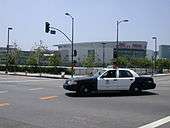
The successor to Davis, Daryl F. Gates, came into office just as Proposition 13 reduced the department's budget, cutting police numbers to less than 7,000 in seven years just as drug and gang crime reached unprecedented highs. To combat the rising tide of gang-related violence, Gates introduced Operation Hammer in 1987, which resulted in an unprecedented number of arrests, mostly of black American and Hispanic youths. Gates retired in 1992, just after the Rodney King-related 1992 Los Angeles riots in April and May and the damaging Christopher Commission Report, and was replaced by Willie L. Williams, the fiftieth chief, the first African-American officer to hold the office and the first non-internal appointee for almost 40 years. In 1997 Williams was replaced by Bernard Parks, during whose term the LAPD was rocked by the Rampart Division/CRASH corruption scandal. In 1997 one of the biggest challenges for the LAPD and LAPD SWAT was the North Hollywood shootout in which two bank robbers armed with automatic rifles and wearing body armor shot twelve responding officers and two bystanders. The suspects were eventually defeated by SWAT units after a gun battle that lasted nearly an hour.
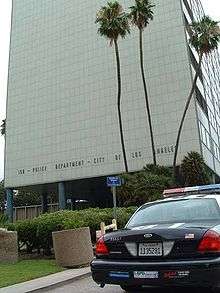
In November 1997, the Department did something for the first time in forty years in taking over another police department—the MTA Transit Police. Originally touted as a merger process, this became a political football with members of the City Council fighting the mayor's "one city—one police department" plan to eliminate all of the smaller, specialized police forces (Transit Police, Airport Police, School Police, Park Rangers, etc.). In the end, only about 130 of the originally slated 200 officers of the MTA Transit Police came to the LAPD, with about the same number going to the LASD. After less than five years, the MTA removed LAPD from the transit policing contract it had established with LAPD and LASD, and LASD was given the entire MTA contract. As of 2006, only 96 of those officers remained with the LAPD.
In 2002, after a loss of approximately 1,700 officers in two years, mostly to other Southern California police departments and in the face of an unprecedented homicide rate, Mayor Hahn moved to have the Board of Police Commissioners refuse to accept Parks' application for another five-year term. Parks appealed to the City Council who refused to take up his cause. Parks initially threatened a lawsuit, but thought better of it and considered a run for City Council in the near future instead. Parks promptly left office, several months before his five-year term was up. Former Deputy Chief Martin Pomeroy was selected as an interim Chief until a permanent replacement could be found. Also in 2002, voters in the City passed the Proposition Q—Citywide Public Safety Bond to expand, renovate and replace existing police and fire facilities. This $600 million bond program included replacement of the West Valley, Rampart, Hollenbeck, and Harbor Police Stations; adding a new Emergency Operations Center; replacing the Parker Center Jail; adding a new Operations Valley Bureau/Valley Traffic Division; and adding two new Area Police Stations—20th (Olympic Area) and 21st (Topanga Area) Police Stations.
William J. Bratton as Chief

Chief William J. Bratton came to the LAPD after having prior experience as Chief of Police for the NYPD, the NY City Transit Police, the Boston Police and the MBTA Transit Police. Bratton came in a manner very different from his most recent outsider predecessor, Chief Parks. Prior to his arrival, Bratton requested all captains and above submit resumes and biographies for consideration in his new administration. Bratton made his initial goals to fully implement the Federal Consent decree (left from the Parks administration), to implement a dramatic reduction in Part I crime and to create a world class counter-terrorism Bureau within LAPD (during Parks' tenure, a year after 9/11, officers still had no WMD training nor equipment; however, Parks had successfully implemented a "no US flag pin" policy for wear on officer's uniforms). Bratton later added community oriented policing to his list of goals. In 2005, the LAPD began showing action-packed mini-movies online and at movie theaters to promote recruiting. The movies feature real LAPD officers and what they do. Bratton retired as Chief of the LAPD on October 31, 2009 and became the chief executive officer of Altegrity Security Consulting, a private security firm based in Virginia.
On May 17, 2005, Los Angeles voters rejected a proposal (Proposition A) that would have merged LAPD and the Los Angeles Airport Police. The argument against this proposal was that officers of the Los Angeles Airport Police had more extensive training in airport law enforcement and security operations. LAPD officers would have needed more training in this new function. At the request of Airport Police, LAPD officers are assigned on an overtime basis to security checkpoints in the terminals at LAX. This assignment became available to LAPD officers and supervisory personnel due to staff shortages at the Airport Police.
In 2006, the Department temporarily relocated two LAPD stations, Hollenbeck and Harbor, to Temporary Stations, while the existing stations were demolished and new ones built on the same sites. Also in 2006, a longtime goal of the Department, to replace Parker Center, began moving towards fruition with demolition of the old Caltrans building at 2nd/ Spring Streets to make way for a new Police Administration Building. The Department broke ground for two new Community Police Stations as well as a replacement of three older stations. The groundbreaking for the 20th (Olympic Area) Police Station, was on May 4, 2006. Groundbreaking for the 21st (Topanga Area) Police Station, was on May 11, 2006.
Replacement Rampart Station was built on the site of the former Central Receiving Hospital (police hospital) that had been located on 6th Street and Valencia Street. As a sidenote, exteriors from Rampart division on Rampart and Benton were filmed for the Adam-12 television series. The department does not permit the interiors of police stations filmed for motion picture purposes, so interiors were filmed at Universal Studios in Universal City, California.
The 21st (Topanga Area) Police Station opened on January 4, 2009 and was formed from parts of the existing West Valley Area and Devonshire Area in the Operations-Valley Bureau. The 20th Area Police Station area will be formed from portions of Wilshire, Hollywood and Rampart Police Station areas. Three additional police stations are planned for additions in the next ten years (2007–2016), one each for the South, West and Central Bureaus of the Department.
In 2006, Mayor Antonio Villaraigosa initiated gradual increases in trash collection fees paid by property owners to hire about 1,000 LAPD officers over the next five years.
On November 17, 2009, Charles L. Beck was sworn in by Mayor Villaraigosa to succeed William J. Bratton as the Chief of the Los Angeles Police Department.[8] A 32-year veteran of the department, he is known for commanding and rehabilitating the Rampart Division after the Rampart Scandal.[9]
The Los Angeles Police Department is world-renowned for its training. Officers on the Department receive the best academic, tactical and physical conditioning in the field. However, as with almost any profession, there are still some hazards associated with the job. On February 7, 2008, when LAPD responded to a call that an emotionally disturbed man killed three of his family members, the man shot two SWAT officers, one of whom was killed. Officer Randal Simmons was the first SWAT officer to be killed in the line of duty since the founding of SWAT.[10]
References
- ↑ "The California State Military Museum: Los Angeles Rangers". Militarymuseum.org. Retrieved 2012-10-09.
- ↑ "The California State Military Museum: Los Angeles Guard". Militarymuseum.org. Retrieved 2012-10-09.
- ↑ "The California State Military Museum: City Guard (Los Angeles)". Militarymuseum.org. Retrieved 2012-10-09.
- ↑ "Archived copy". Archived from the original on February 15, 2005. Retrieved July 8, 2008.
- ↑ "Chiefs of the Los Angeles Police Department - Los Angeles Police Department". Lapdonline.org. Retrieved 2016-04-29.
- ↑ "Court Sends Boy Lover to Prison" Thorstad, David. Gay Community News. Boston: December 26, 1981. Vol. 9, Iss. 23; pg. 1
- ↑ "Police Free Gay Slaves". Csun.edu. Retrieved 2016-04-29.
- ↑ Rubin, Joel (November 17, 2009). "Charlie Beck named L.A.'s new chief of police". Los Angeles Times. Retrieved November 17, 2009.
- ↑ Joel Rubin and Phil Willon (November 3, 2009). "Villaraigosa selects Beck to be next LAPD chief". Los Angeles Times.
- ↑ "Police Officer Randal D. "Randy" Simmons, Los Angeles Police Department, California". Odmp.org. Retrieved 2012-08-22.